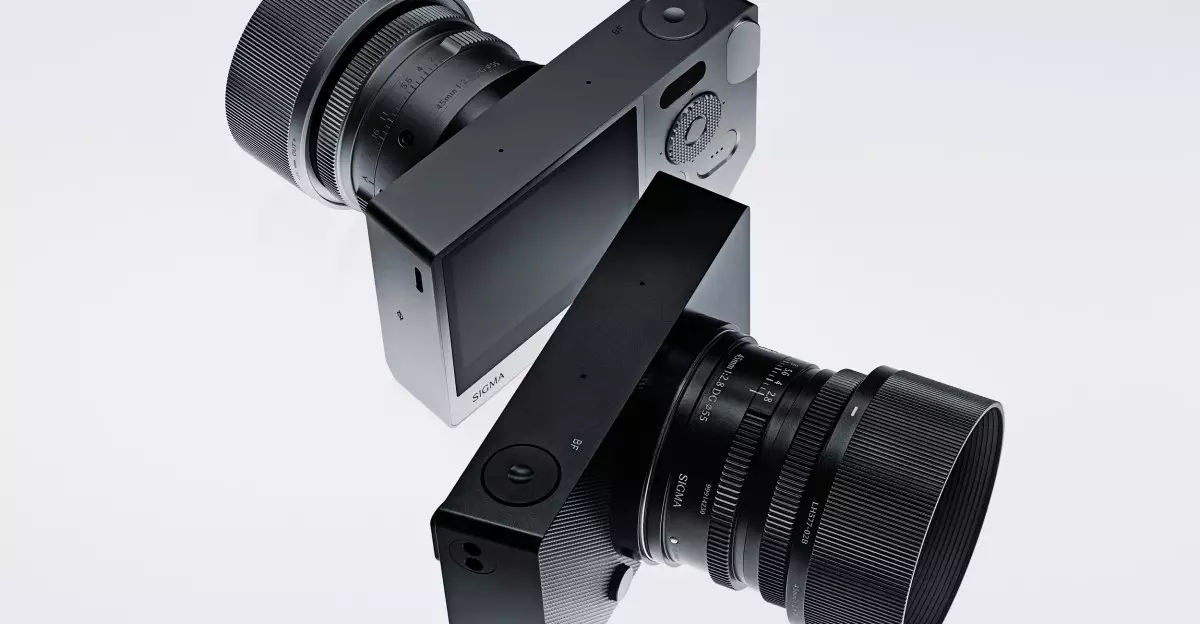The photography landscape is ever-evolving, with manufacturers in the industry constantly pushing boundaries to deliver more powerful and user-friendly devices. Sigma’s latest addition to the market, the Sigma BF, epitomizes this trend. Designed with simplicity and functionality in mind, this compact full-frame camera not only boasts an impressive 24.6-megapixel sensor but also a suite of innovative features that are aimed at modern photographers. This article aims to explore the Sigma BF in detail, shedding light on its design philosophy, storage solutions, user interface, and performance capabilities.
At first glance, the Sigma BF captivates with its refined, minimalist aesthetics. Sigma has opted for an ultra-simplified design that breaks away from the traditional, complex configurations many digital cameras present. By integrating only four control buttons and a dial, the BF offers a fresh approach to the user experience. The camera is crafted from a single block of aluminum, ensuring both sturdiness and a premium feel in the hand.
The back of the camera features a 3.2-inch touchscreen that, despite lacking articulation, provides a user-friendly platform for interaction. This design choice indicates Sigma’s intention to minimize complications and focus on delivering an efficient photography experience. Complementing the touchscreen are three touch controls, equipped with haptic feedback technology. This enhancement provides tactile cues, making users feel as though they are engaging with physical buttons, which can be more intuitive for those accustomed to traditional control settings.
One of the most striking features of the Sigma BF is its approach to storage. Rather than the conventional memory card slot, the BF houses a 230GB built-in SSD, a decision that reflects a significant shift in camera design strategy. This substantial storage capacity allows photographers to store approximately 14,000 JPEG files or 4,300 uncompressed RAW images, offering ample room for extensive shooting sessions. The absence of a memory card slot also minimizes the clutter and inconvenience of managing separate storage devices, streamlining the workflow for photographers on the go.
Additionally, the camera includes a USB-C port for charging and file transfers, ensuring compatibility with modern technology while facilitating fast data management. This forward-thinking feature addresses a common pain point for many digital photographers, allowing them to quickly offload images and recharge without cumbersome equipment.
Sigma has reimagined the user interface of the BF, establishing a novel information structure that distinguishes it from conventional cameras. Key shooting settings such as shutter speed, aperture, ISO, and exposure compensation surround the live preview, providing users with immediate access to vital controls without overwhelming the display with excessive information. Secondary settings are subtly tucked away in an optional menu, while more intricate camera management functions can be found in the system menu, prioritizing simplicity and ease of use.
This innovative layout allows photographers to focus on image composition rather than fumbling through menus, which can detract from the creative process. By streamlining access to essential features, Sigma has created a camera that encourages spontaneous shooting and exploration.
In today’s digital age, capturing images that stand out is paramount, and Sigma has recognized this by integrating 13 distinct color modes into the BF. Photographers can choose from various options—not only standard and rich modes but also artistic variants like forest green, sunset red, warm gold, cinema, and monochrome. These presets enable users to impart a particular aesthetic directly within the camera, eliminating the need for extensive post-processing.
From a performance standpoint, the Sigma BF does not disappoint. The hybrid autofocus system blends phase detection with contrast detection, bolstered by advanced algorithms that swiftly lock focus on subjects, whether they’re people or animals. This capability is complemented by the camera’s ability to shoot six frames per second, making it suitable for dynamic, fast-paced photography scenarios. Additionally, with the option to capture 6K video at nearly 30 frames per second, the BF positions itself as a versatile tool for both photographers and videographers.
The Sigma BF presents a compelling mix of innovative design, practical storage solutions, an intuitive user interface, and impressive performance features. By stripping away unnecessary complexities, Sigma not only caters to seasoned professionals but also welcomes beginners into the world of photography. As the industry continues to evolve, the Sigma BF sets a new standard for compact cameras, demonstrating that simplifying the user experience does not mean compromising on quality or functionality. Available for $1,999 in both black and silver finishes, it is poised to make an impact when it officially ships in April 2025. For photography enthusiasts looking for a blend of contemporary design and cutting-edge technology, the Sigma BF is undoubtedly worth considering.

